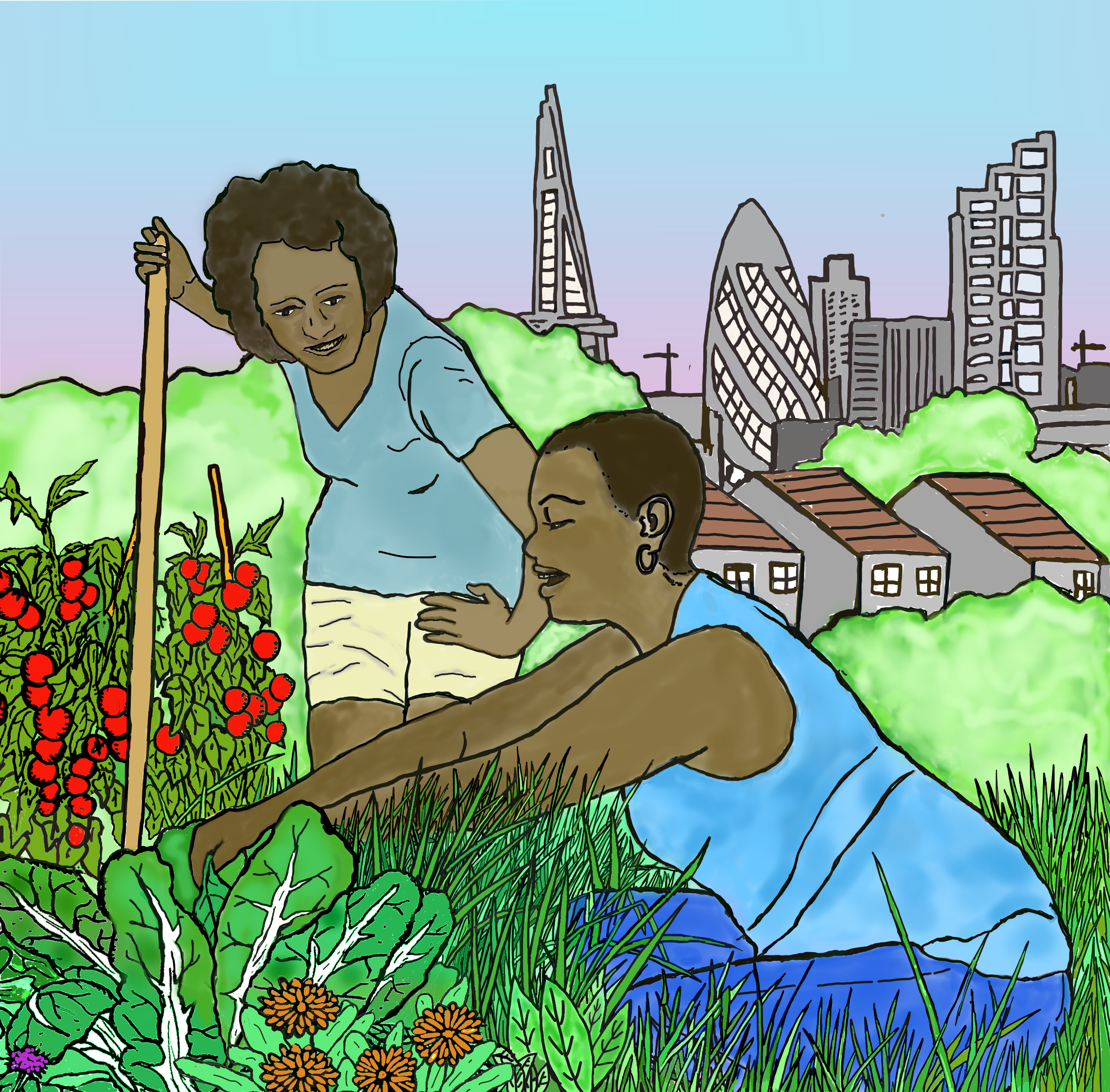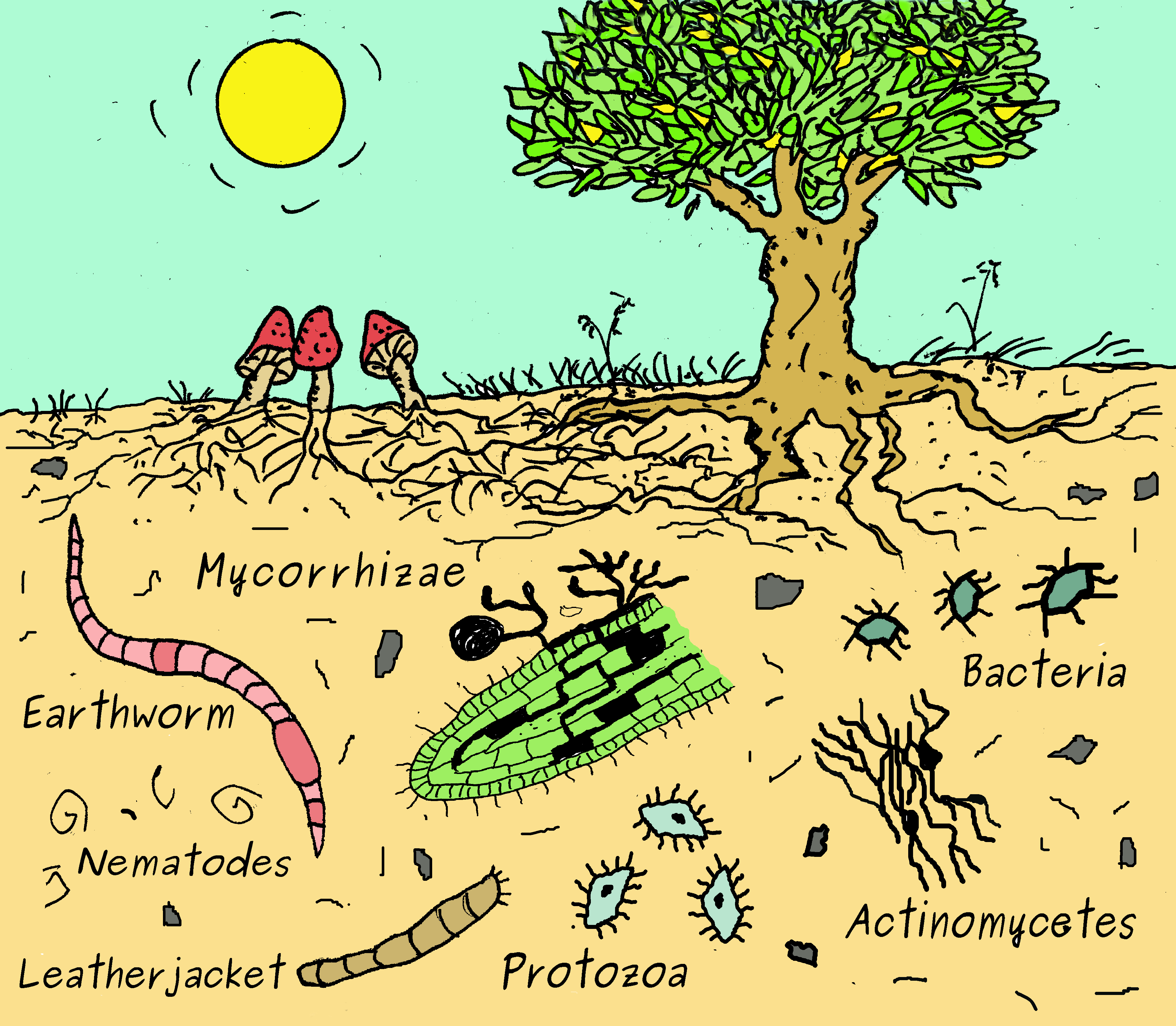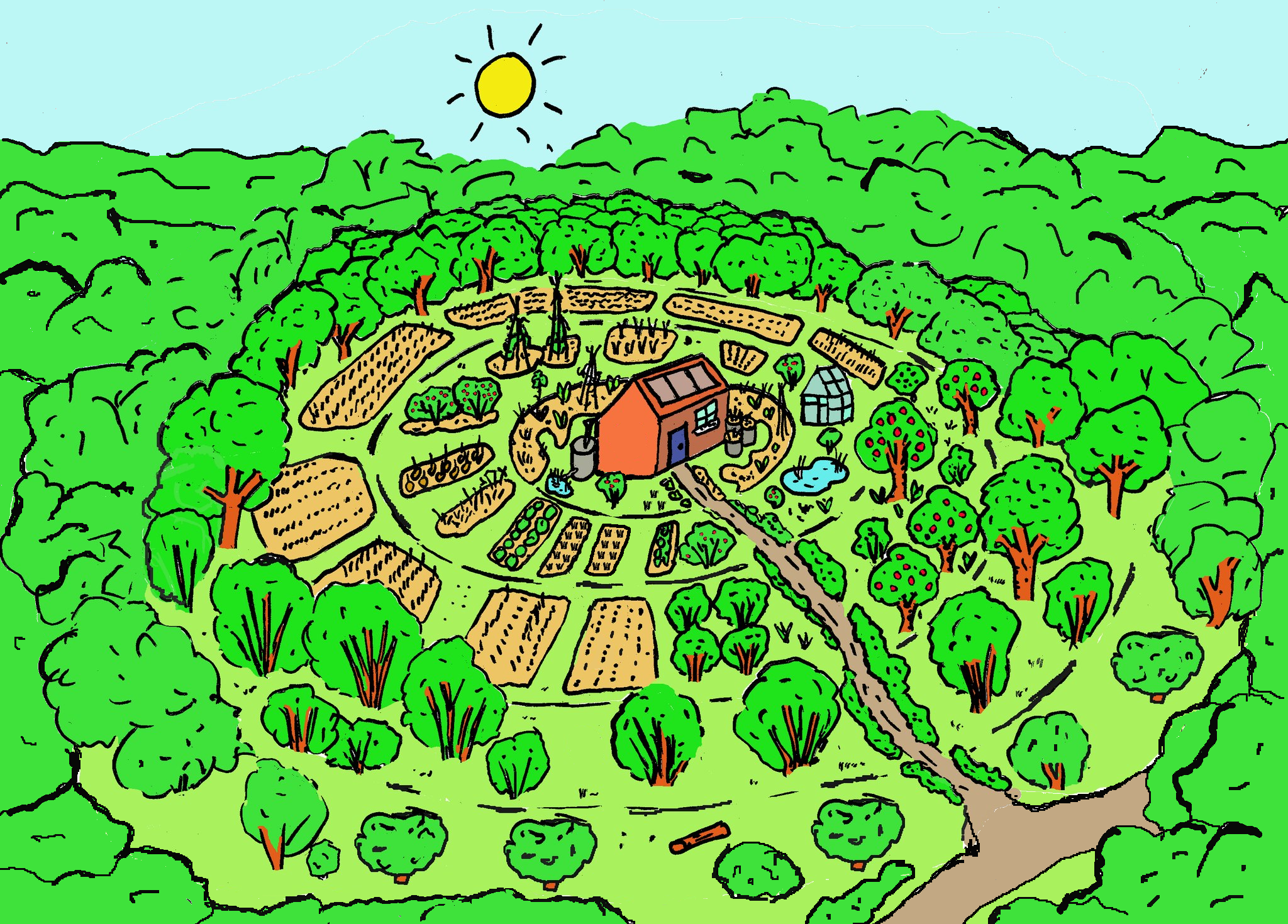 As the world becomes increasingly aware of the devastating effects of the climate crisis and the depletion of natural resources, it's clearer than ever that we need to find new ways of living in harmony with the earth. It’s time to move away from industrialised monocultural growing systems, and reinvent a human-scale agricultural landscape.
As the world becomes increasingly aware of the devastating effects of the climate crisis and the depletion of natural resources, it's clearer than ever that we need to find new ways of living in harmony with the earth. It’s time to move away from industrialised monocultural growing systems, and reinvent a human-scale agricultural landscape.
Permaculture is a design philosophy that mimics the relationships and systems found in natural ecologies, emphasising the use of renewable resources, diversity and cooperation to create sustainable communities and ecosystems. Underpinning all permaculture systems are fundamental ethical values around caring for the earth and its peoples, as well as the fair and just distribution of resources. To me, these fit well with the vegan philosophy of compassionate living and the precept of ‘do least harm’. In seeking to exclude the use of animal products and cruelty as far as is possible and practicable, a veganic ‘take’ on permaculture asks whether it is enough to simply ‘care for’ our non-human fellow earth-citizens whilst our relationships with them continue to be exploitative, or should we actively promote their recognition as self-willed beings with an intrinsic right to exist free from unnecessary harm?
In traditional permaculture, animals may be used for food, labour, and manure. However, in a vegan permaculture system, these functions are fulfilled through plant-based alternatives, eg, polycultural plantings, agroforestry and forest gardening, greater use of perennial crops, and employing techniques such as green manures, vegetal compost mulching and other ways of using organic matter to enrich and rebuild soil health.
 Yet it’s been asked whether completely animal-free permaculture systems are actually possible. My response is, of course not, and neither would it be desirable. For how would we fence out the earthworms that build our soil and maintain its fertility or the bees that pollinate our fruit trees and vegetables, and why ever would we wish to? In fact, we actively design in features that are intended to attract wildlife: Ponds for frogs, toads and dragonflies, log piles to provide habitat for slow worms, beetle banks and flowering plants to bring in the ladybirds and hoverflies that keep populations of potential pests like slugs and aphids in check and are essential to maintaining healthy productive ecosystems. What we don’t include are those animals commodified as ‘system components’ that we believe perpetuate exploitative relationships with our non-human fellow earth citizens, such as pigs, goats and chickens, whose primary function is the production of meat, milk and eggs.
Yet it’s been asked whether completely animal-free permaculture systems are actually possible. My response is, of course not, and neither would it be desirable. For how would we fence out the earthworms that build our soil and maintain its fertility or the bees that pollinate our fruit trees and vegetables, and why ever would we wish to? In fact, we actively design in features that are intended to attract wildlife: Ponds for frogs, toads and dragonflies, log piles to provide habitat for slow worms, beetle banks and flowering plants to bring in the ladybirds and hoverflies that keep populations of potential pests like slugs and aphids in check and are essential to maintaining healthy productive ecosystems. What we don’t include are those animals commodified as ‘system components’ that we believe perpetuate exploitative relationships with our non-human fellow earth citizens, such as pigs, goats and chickens, whose primary function is the production of meat, milk and eggs.
 So although veganic permaculture aims to create self-sustaining, resilient edible landscapes that are ‘stock free’, in actuality members of several of the Kingdoms of Life (plants, animals, fungi and bacteria) will be working together for mutual benefit. In a forest garden, for example, deep-rooted comfrey plants mine nutrients from the subsoil, making them available to fruit trees and bushes. Mammals such as foxes and hedgehogs deposit fertility via their droppings whilst birds and bees buzz around the canopy layer. Meanwhile, insects and arthropods patrol the undergrowth and leaf litter, checking and balancing pest populations and playing their role in the cycles of growth and decay. Fungi and bacteria continue the process, breaking down dead matter into rich humus via mycorrhizal networks, all players with their place in the symphony of the soil. Based on the structure of natural woodland, the forest garden is a complex web of which humans too are an integral part, as we manage, maintain and harvest from these biosystems.
So although veganic permaculture aims to create self-sustaining, resilient edible landscapes that are ‘stock free’, in actuality members of several of the Kingdoms of Life (plants, animals, fungi and bacteria) will be working together for mutual benefit. In a forest garden, for example, deep-rooted comfrey plants mine nutrients from the subsoil, making them available to fruit trees and bushes. Mammals such as foxes and hedgehogs deposit fertility via their droppings whilst birds and bees buzz around the canopy layer. Meanwhile, insects and arthropods patrol the undergrowth and leaf litter, checking and balancing pest populations and playing their role in the cycles of growth and decay. Fungi and bacteria continue the process, breaking down dead matter into rich humus via mycorrhizal networks, all players with their place in the symphony of the soil. Based on the structure of natural woodland, the forest garden is a complex web of which humans too are an integral part, as we manage, maintain and harvest from these biosystems.
 And so vegan permaculture is also about people care, recognising the importance of community and cooperation. By working together, individuals can create systems that provide for their needs while also protecting the environment. This can take the form of community gardens, co-housing developments, addressing issues around food sovereignty, energy production, ‘green’ transport and other aspects of collective living.
And so vegan permaculture is also about people care, recognising the importance of community and cooperation. By working together, individuals can create systems that provide for their needs while also protecting the environment. This can take the form of community gardens, co-housing developments, addressing issues around food sovereignty, energy production, ‘green’ transport and other aspects of collective living.
The Veganic way combined with permaculture design has the potential to create a world that is not just ‘sustainable’ but truly REGENERATIVE, restoring forests, repairing ecosystems, building soils, increasing biodiversity, developing local economies and addressing issues of social justice and animal liberation, and enabling us to Grow Back Better..
Our next online Vegan Permaculture Design Course begins in May 2023. Led by Graham Burnett, author of the Vegan Book of Permaculture. Past guest speakers include no-dig expert and writer Steph Hafferty, KMT Freedom Teacher of May Project Gardens in South London, Iain Tolhurst of Tolhurst Organics near Reading, Jenny Hall of Climate Friendly Foods, perennial veg grower Mandy Barber of Incredible Vegetables plant nursery, Joe Kilcoyne and Heather Patrick of Wild Earth Farm and Sanctuary in Kentucky, USA, Paul Payne of Ecoworks community garden in Nottingham and many others. Find out more at spiralseed.co.uk/courses
